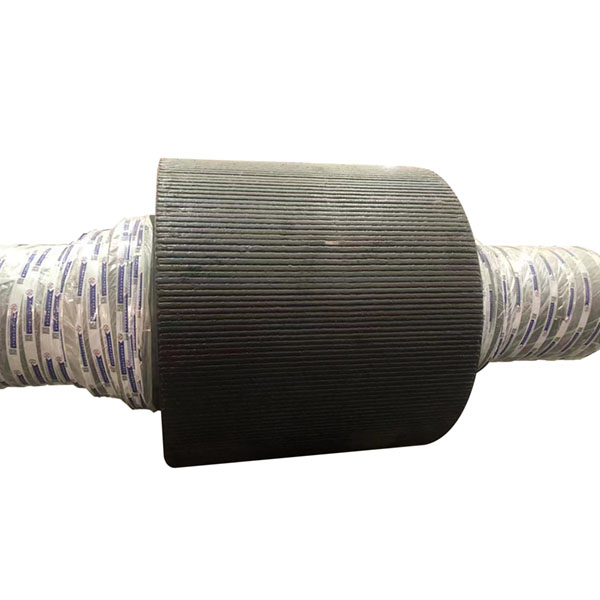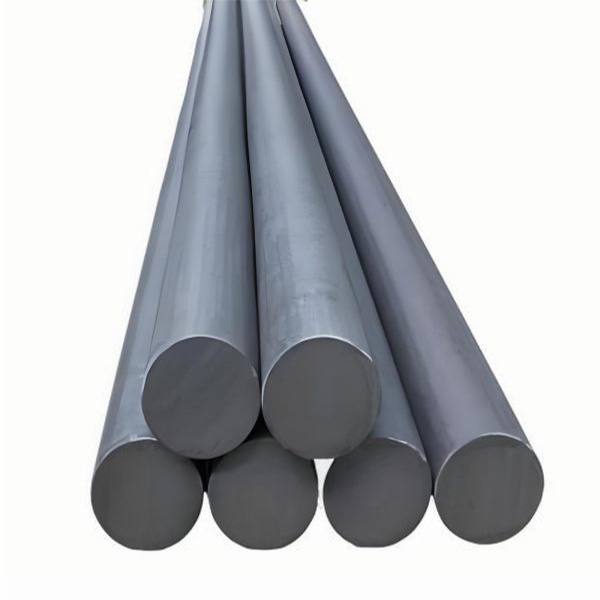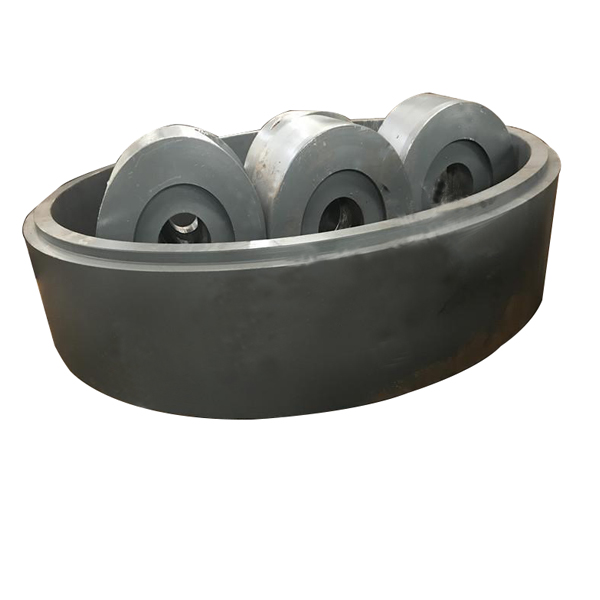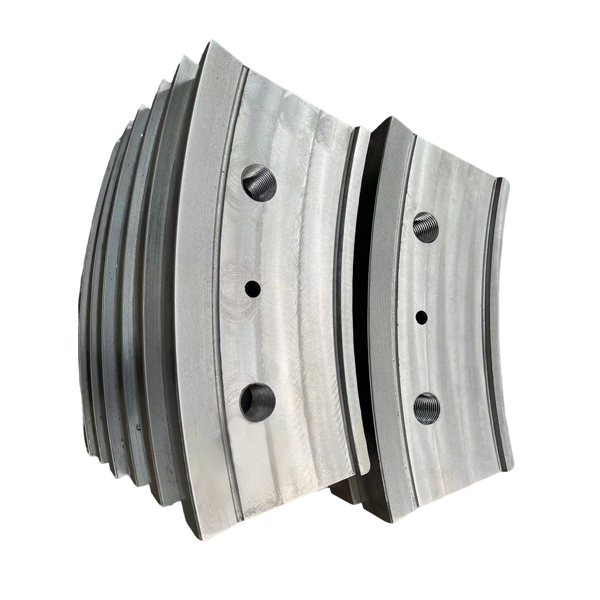Extrusion roll/Grinding roll
Global sales Custom OEM Design
Product Name: Vertical Mill Roll, Roll Sleeve, Grinding Roll, Conical Roll, Wheel Roll, Roll Press Extrusion Roll
Production Process: Casting
Applicable Machines: Vertical Mill, Roll Press
Material Types: High-chromium cast iron, ceramic-metallic composite, hardfacing, medium-alloy steel, high-manganese steel + TiC alloy bar + wear-resistant welding layer, etc.
Applicable industries: Mining, cement plants, coal, steel, etc.
Our service:
1. Before the sale, we will fully understand the customer's working conditions and recommend the most suitable material selection.
2. We will provide customers with drawings based on their machine models, spare parts dimensions, etc.
3. After the sale, we will continue to monitor the product's use and provide timely assistance.
If you need detailed technical information about the product or cannot find the desired product on the website, please send an email to (info@lyzhili.com), as we are a custom wear parts factory.
Currently, grinding rolls used in vertical roller mills in various industries can be divided into two types, according to their shape: tapered roll and wheel roll.
As a professional manufacturer of cement equipment parts, Zhili New Materials can manufacture matching mill rolls for customers according to their VRM drawings or models. We have continuously developed and improved our production process and manufacturing technology over decades. Currently, we possess advanced VRM grinding roll production technology. We are committed to improving the wear resistance of vertical mill rolls, optimizing the grinding process, and helping customers save on maintenance costs.
The materials for the grinding rollers we produce are mainly high-chromium cast iron, high-chromium cast iron + coating, medium alloy steel (alloy pins) + coating, ceramic alloy composite, etc.
High Chromium Content + Coating
The most commonly used material in grinding rolls is high chromium content. Adding coating welding can extend service life, reduce costs, and improve efficiency. Coating welding includes hard coating with solder wire and coating welding with alloy pins.
The solder wire coated grinding roll improves wear resistance and service life by depositing wear-resistant solder wire on the surface of the roll body.
Medium alloy steel (alloy pins) + coating
The vertical grinding roll for surface welding with alloy pins is designed according to the working conditions and wear resistance curve of the product. In the wear area, powder metallurgy technology and surface technology are combined, and special welding materials are used to form the incrustation welding structure and metallurgical combination, improving wear resistance and product service life, and achieving regenerative repair to extend product service life.
Ceramic alloy compound
The ceramic alloy compound grinding roll combines the characteristics of ceramic and alloy. It possesses the wear resistance of ceramics and the mechanical properties of an alloy, and is not easily broken or dropped. Due to the different properties of ceramics and alloys, a difference in height occurs on the surface, thus forming a honeycomb-shaped structure, which increases the frictional force and the effective contact area of the surface, helping to improve grinding or crushing efficiency.
High manganese steel + TiC alloy bar + wear-resistant weld layer
The vertical grinding roll with welded coating and alloy pins was designed according to the working conditions and wear resistance curve of the product. In the wear area, powder metallurgy and coating technologies are combined, and special welding materials are used to form the embedded welding structure and metallurgical combination, improving wear resistance and product life, as well as promoting regenerative repair to extend its service life. This type of roll is suitable for extremely harsh working conditions and can replace ceramic rolls and other products currently available on the market.

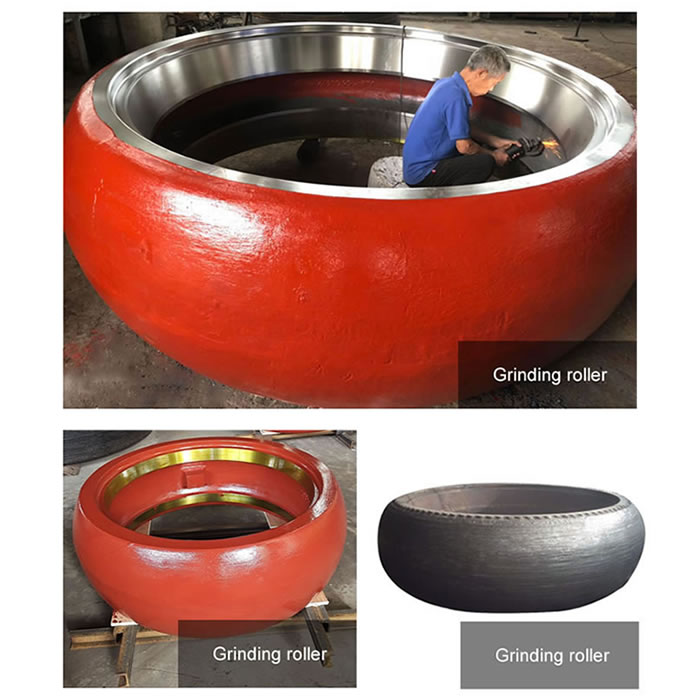
Production Process: Alloy Pin Coating
Applicable Machines: Roller Press
Material Types: Alloy steel (high manganese steel) + titanium carbide (pin) + hard coating layer; 35CrMo or 42CrMo + hard coating
Applicable industries: Cement, chemical, electricity, metallurgy, building materials, refractory materials
Suitable materials: Limestone, slag, coke, coal and other materials
The roller material is mainly composed of Cr, Mo, V, W, Nb and other elements. The wear-resistant layer is applied to the outermost layer of the roller sleeve by centrifugal casting. The surface pattern is formed by casting.
The pin roller consists of a forged roller shaft, a special alloy compound roller sleeve, and wear-resistant carbide pins. The alloy pin coating press extrusion roller has the following characteristics:
1. The base metal is high-strength, high-toughness cast steel, which can be welded;
2. Corresponding alloy pins can be selected according to working conditions. The wear resistance of the alloy pins is good, comparable to that of ceramic pins, and they can be welded;
3. In case of detachment of the alloy pins under abnormal conditions, they can be replaced by overlapping, which is practical and quick;
4. The alloy pin forms a bonding effect in the embedded welding structure, further improving the strength of the alloy pin and the surface layer. Abrasion and reliability.
5. The surface of the grinding roll has good resistance to peeling and integrity; the integrity of the roll surface can be guaranteed against the entry of foreign materials, quickly restoring its size.

Related Products





